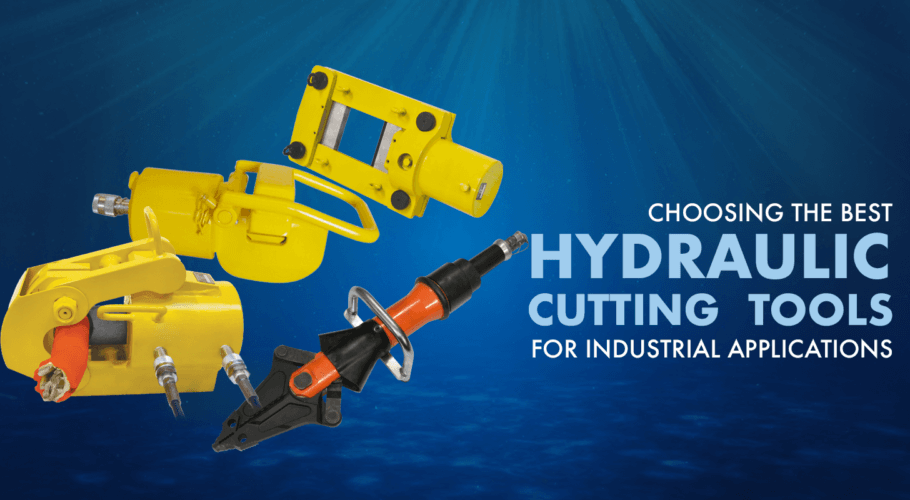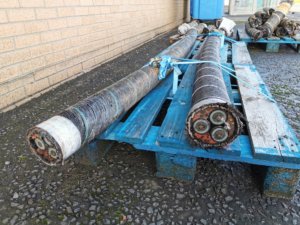
Construction crews, manufacturers, and riggers are faced with routine and frequent cutting tasks that require premium-quality equipment to complete the tasks to the highest standard. These tasks commonly involve cutting materials such as metal bars, chains, wires, cables, and many more. When looking to purchase or hire hydraulic cutters, you want to source the best performing, most reliable tools that can cut the material in question as efficiently and safely as possible.
There are many considerations to take into account before selecting the ideal cutter for your application. In this blog, we’ll cover everything you need to consider before choosing the hydraulic cutter for your application.
Before you can choose your desired Cutter, you will need to familiarise yourself with the different types of Cutting Equipment available on the market. There are various designs that are purposed for different materials and cuts. Blade lengths and types can also differ, with some featuring concaved shapes and others boasting a simple fine-edged blade for the cleanest cuts.
Each type of cutter is designed for differing strengths of material, including chains, cables, ropes, steel rods, pipes, and many more. As we’ll explore below, some options are more suited to tackling smaller cuts such as light chains.
Chain Cutters are ideal for close precision cutting operations. They are a popular choice for applications that involve solid metals such as pipes and steel bars.
Cable/Rope Cutters feature a concaved-edged single blade cutting system to ensure a clean and full cut of the toughest materials. This type of cutter thrives in applications where the material is made up of multiple strands tightly woven together to form a firm material, such as ropes or cables.
Guillotine Cutters provide the user with an unrivalled and clean cutting force using a straight-edged double-bladed cutting system. If you have an application that involves cutting something without a continuous length, such as a section of pipe, the Guillotine Cutter is your favourable option.
Ideal for safety-critical applications, both topside and subsea, Remotely Operated Cutters emphasise safety, as the operator does not need to stand within the close vicinity of the cutters when executing operations. This makes this tool the ideal solution for potentially dangerous applications where tight spaces pose a threat to the operator.
Although there are different types of cutters for specific materials, there are vital requirements of every cutter you should expect to ensure that you’re accessing the highest-performing cutters on offer.
Reliability – It goes without saying that you should rely on your equipment to perform the cut to an expected standard. To ensure maximum reliability, explore the most relevant applications for each cutter. This will ensure you don’t use the wrong type of cutter for your application.
Safety – This is the most important aspect of any equipment. When operating tools with razor-sharp edges and moving parts, operator safety cannot be emphasised enough. Consider a cutter that can be remotely operated, to eliminate the risk of lacerations to the operator.
Efficiency – You want your cutter to complete a cut as quickly as possible without compromising on quality. The idea of a quick project may sound good in theory, but by hurrying you risk the job being rushed and potentially can miss out on a clean cut. A double-acting cutter will retract quickly and therefore improve the efficiency of your projects.
Performance – On the topic of clean cuts, performance is another crucial requirement for cutting equipment. The power of a cutter will determine its ability to cut tougher and larger applications. Different models of cutting equipment will boast different outputs (tons) as well as maximum cutting capacity (mm).

Hydraulic Cutters are engineered specifically to meet the toughest production requirements. This means they’re ideally suited to intense production applications in industries such as:
Hydraulic Cutters can be used to sever almost any material, including steel rods, chains, pipes, cables, and many more. Unlike other cutting methods, such as torching and angle grinders, there’s no need for specialized PPE, such as flame-retardant clothing or respirators. Instead, the user is provided with an efficient and safe cut, regardless of the application.
HTL cutting equipment is suited to a vast range of industries, including subsea and decommissioning. Offering quality, strength, and durability, our line of hydraulic cutters is designed to handle everything from cables to steel bars and pipes.
With strategically placed facilities along the UK North Sea coast, you can rely on HTL to support all of your topside or subsea cutting requirements. We have decades of experience in supplying hydraulic cutting equipment and can support a vast range of industries with their cutting requirements. Contact our team today and let us know your requirements.